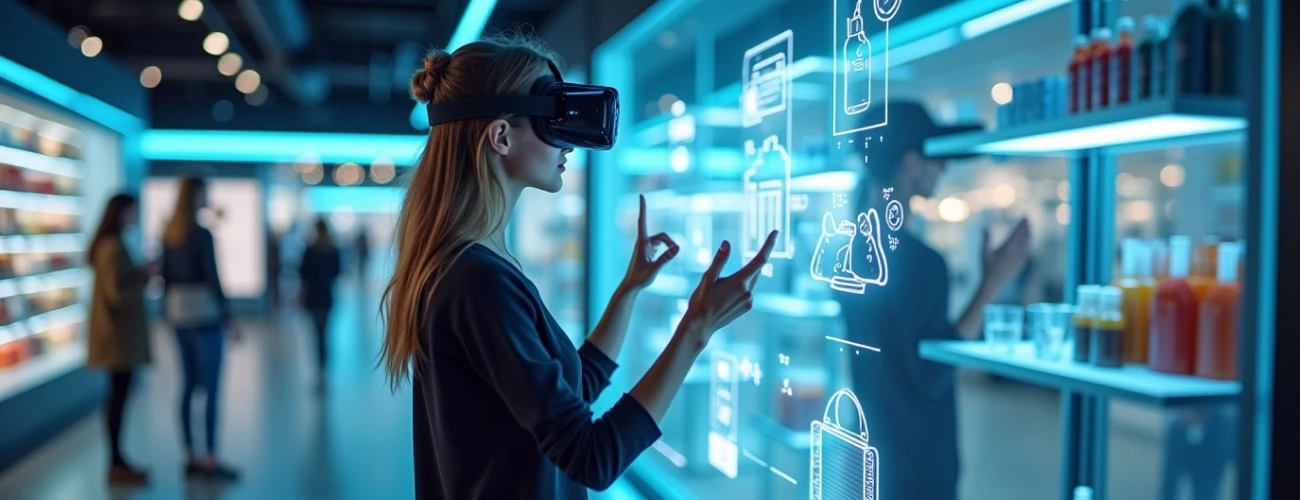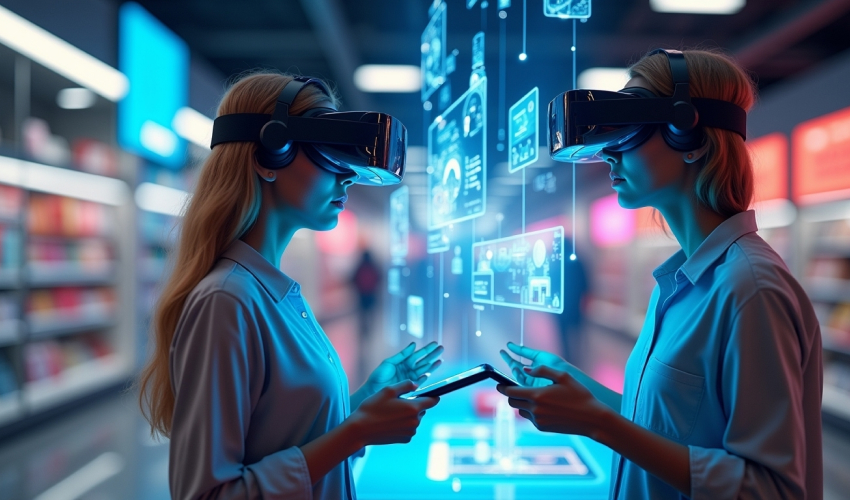The future of online stores: AR and VR technologies

A new trend for online stores is not just static product images but AR and VR technologies that let shoppers literally “touch” products with their eyes. Visitors can try on shoes, arrange furniture in their living rooms, or explore a virtual showroom as if they were physically there. In this article, we’ll explain how online shopping is turning into a vivid and engaging experience — and what AR and VR mean for e-commerce.
AR Product Try-On (Clothing, Furniture, Electronics)
Augmented Reality (AR) allows online store customers to “add” digital objects into the real world — showing virtual products on the device screen as if they were right in front of the user. For example, using a camera, the buyer sees themselves or their room, while AR “places” products into the image: clothing on the body, a sofa in the living room, or a gadget on the desk.
AR for online stores works as follows:
- environment scanning — through the camera, the system detects the floor, walls, and objects, determining where the virtual item should be placed;
- placement and scaling — AR correctly positions the product in the selected spot and adjusts its size to appear natural and proportionate;
- interactivity — the user can rotate, move, or zoom in on the object, try on a dress, arrange furniture in a room, or view a phone from all angles;
- realistic visualization — thanks to textures, lighting, and shadows, the virtual item looks almost indistinguishable from a real one.
Online stores that have implemented AR report a noticeable increase in conversion rates — on average by 20–30%. Moreover, AR try-ons help reduce product returns by 20–40% and significantly boost user engagement. Previously, customers might have quickly browsed through pages, but now they spend much more time exploring products interactively.
VR Showrooms for E-commerce
A VR showroom is a virtual store where a customer can “immerse” themselves using a VR headset or via a computer or smartphone. It allows them to move freely between displays, view products at life-size scale, and change colors or configurations. This format not only showcases products but also builds an atmosphere that captures customer interest.
How VR works for online stores:
- full immersion — a 360° environment is created where the buyer can look around, move through the virtual store, and examine products in detail;
- interactivity and customization — users can interact with products and instantly see changes;
- gamification — the showroom can include interactive tasks, mini-games, or quests that make product exploration engaging and encourage purchases;
- direct checkout and analytics — users can add products to their cart or submit orders directly from the VR showroom, while the system collects behavioral data for further optimization.
A VR showroom is a real breakthrough for online stores. Major brands such as IKEA and automotive companies report that virtual demos increase product interaction time and improve conversion rates. Customers who “visit” a VR showroom are more likely to make a purchase and less likely to return items.

AR Integration into Websites and Apps
Augmented reality is a service that is available to any online store, not just global brands. AR technology can be installed directly on a website or mobile app so that customers can try on products at home in just a few clicks. When developing an online store, there are two main ways to integrate AR:
- WebAR — technology available directly in a smartphone browser; for example, a buyer opens a sofa product page, clicks “View in AR,” or scans a QR code, and then sees the sofa in their room via the phone’s camera or AR glasses; on iPhone this works through Quick Look, and on Android via Scene Viewer; the advantage: no app installation required;
- native AR in apps — a more advanced option using ARKit (iOS) or ARCore (Android), providing maximum accuracy and additional features such as room measurement or personalized avatar creation.
On a computer, users can view interactive 3D product models directly in the browser — rotate them with a mouse and zoom in. However, PCs lack cameras and sensors, so overlaying on the real world isn’t possible. For a full AR/VR experience, special headsets can be used.
What you need to implement AR on a website or app:
- prepare high-quality 3D product models in formats supported by various devices (GLB/GLTF for Android and web, USDZ for iOS);
- optimize model file sizes to ensure fast loading, even on mobile networks;
- add a fallback option — such as a 360° view or standard 3D model — in case AR is unavailable on the user’s device;
- make the “View in AR” button prominent and intuitive — the simpler the process, the more likely customers are to use the feature.
These steps help online stores not only implement the technology correctly but also ensure a smooth and enjoyable user experience. The faster and simpler AR works, the higher the chance that a customer will try it and make a purchase decision.
Case Studies of Global Brands
- IKEA — the IKEA Place app lets users visualize furniture directly in their rooms, checking size, color, and lighting, reducing purchase errors and building product trust;
- Alibaba — the Buy+ project allowed users to “walk” through virtual stores in VR, creating a sense of presence during major sales events;
- Nike — the Nike Fit AR service helps users find their shoe size, while AR ad gamification boosts engagement and loyalty;
- Warby Parker — virtual eyewear try-on that accounts for face size and pupil distance makes online purchases easier and more accurate.
Want to integrate AR and VR into your online store? Contact Megasite! We create websites in Kyiv and across Ukraine and will develop a modern platform that brings you profit.
Your project
Call/write:


